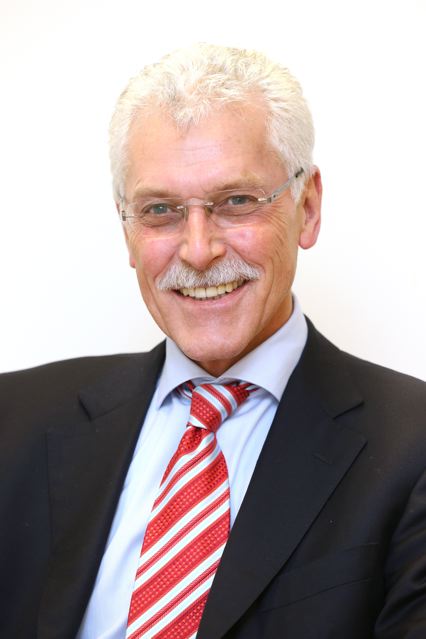Maximilian F. Reiser steps down as Editor-in-Chief of European Radiology
Interview published in “ECR Today 2017” on Wednesday, March 1.
ECR Today: European Radiology has come a long way, you are heading the celebrations of the 25th Anniversary at this ECR. How do you see the journal’s past and present?
Maximilian F. Reiser: The analysis of the present needs some retrospection. All my predecessors have done an outstanding job to make European Radiology a highly recognized radiology journal. Over the time, and also with the foundation of the two other journals, Insights into Imaging and recently European Radiology Experimental, the profile of ER was streamlined to a highly scientific journal, resulting in the acceptance of almost exclusively original articles with a clear focus on clinical radiology, but also some systematic reviews, special reports and clinical guidelines issued by scientific societies, while political statements and educational articles are mostly published in Insights into Imaging. ER-x is devoted to preclinical and methodological topics, which have not yet entered the practice of clinical radiology.
ECRT: The Impact Factor did not develop as positively as many other parameters of the journal over the past 2 years. How do you explain this?
MR: Over the past decade, submissions to European Radiology more than doubled!
Despite an increase in citations, the Impact Factor went down due to an increase in “source items” which is the number of published articles; we were too slow in reducing the acceptance rate accordingly to the increasing submissions, which we are doing now. On a personal note I would like to mention that I really struggle when I have to reject an article and with a rejection rate of more than 80% this happens very frequently.
Another reason for the decrease of the Impact Factor is the fact that we had very highly cited guidelines with several hundred citations in the past years; other articles could not compensate for these.
It is truly a weak point, but I would like to mention that many other parameters of the journal are excellent, for example the usage: we saw a substantial growth in article downloads – for 2016 we hade impressive 623,000 downloads, which proves that the journal is much appreciated and widely read.
ECRT: What needs to happen in order to make European Radiology fit for the next 25 years?
MR: European Radiology should improve the selection of excellent articles and be the forum for cutting edge radiological research in Europe and worldwide. In my view, the journal needs a face lifting, as well as increased interaction with readers and authors. More active scouting for hot topics and the top authors will also be necessary, but this takes a lot of time and efforts parallel to managing the peer-review process of 2,300 article submissions per year!
ECRT: How do you see your role in light of all these suggested changes?
MR: These necessary changes should be made together with a new editor; it would be more convincing to start a new beginning with a new personality. Together with the recently appointed editors of Insights into Imaging and European Radiology Experimental a renewed team of editors of the ESR journal family would send out a compelling message.
I therefore decided to step down from my post by the end of this year. I would like to emphasize that European Radiology is very close to my heart and that it was and still is a wonderful experience to have deep insight into the “editorial business”. Publications in scientific journals play a key role both for the careers of scientists and for the reputation of a speciality. Therefore, the editor of a scientific journal has a huge responsibility.
ECRT: What did you like and what did you dislike as Editor in Chief of European Radiology?
MR: It is indeed fascinating to have insight into the newest developments of research in our speciality. The selection of articles to be published offers an opportunity to make a contribution in shaping the future of radiology.
We have introduced the “Albert l. Baert Editorial Fellowship” and have so far hosted three fellows in Munich. This fellowship aims at introducing young and especially promising radiologists to editorial skills, such as manuscript evaluation, manuscript editing, organisation of peer review, manuscript production and publishing, including electronic publication. The contact and interaction with these young and highly talented colleagues was a great experience.
The role of the reviewers cannot be emphasized enough. They are carefully selected experts in their field who devote extra time, diligence and engagement to the crucially important task of reviewing the manuscripts submitted to European Radiology, thus allowing me to make appropriate editorial decisions. I cannot thank them enough!
Having said that, what I really hate is to reject manuscripts, as it means disappointing researchers who have invested a lot of time and energy into their research and writing the manuscript. I will surely not miss this duty.
ECRT: A final question: Who are the people behind European Radiology and how do they interact?
MR: We have an outstanding team of Deputy Editors who have special expertise in various fields of radiology: Professors Rahel Kubik, Sujal Desai, Jean-Francois Geschwind, Jose Maria Garcia Santos and Peter Vock. Together with the ESR-Editorial office under the leadership of Stefanie Bolldorf, as well as Dr. Katrin Deininger, the scientific assistant in the Munich office, the strategy and policy of European Radiology and critical manuscripts are regularly discussed. I would like to express my gratitude for their great expertise, dedication and engagement. Last but not least, it would like to thank the representatives of our publisher Springer-Nature (Dr. Ute Heilmann, Dr. Isabel Arnold) for their continuous and competent support.

